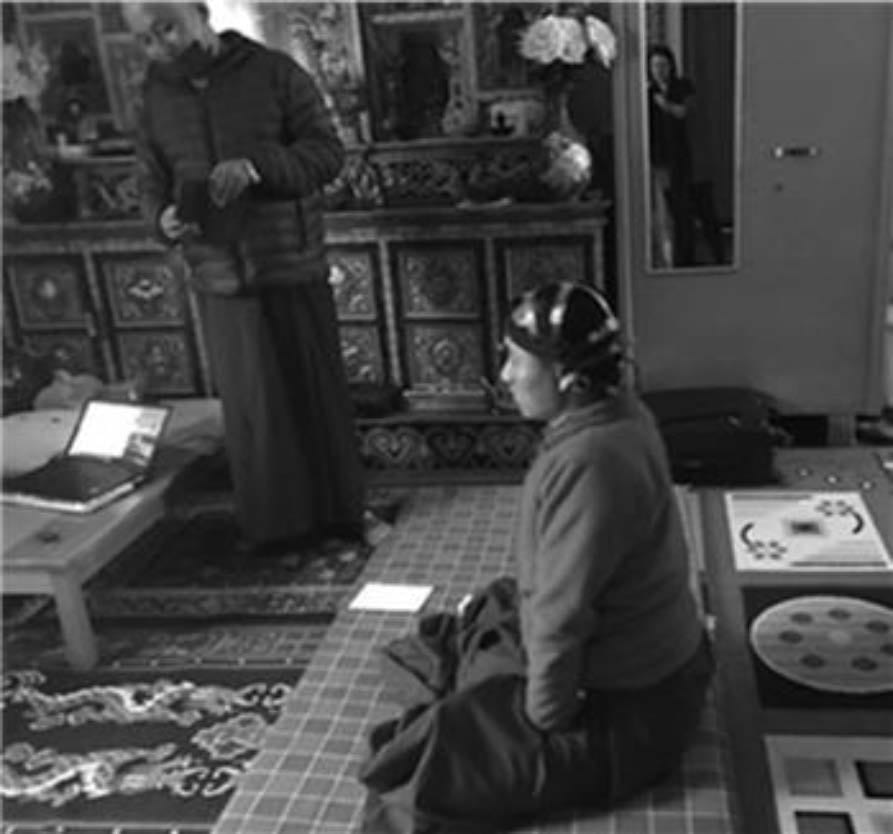Beyond Mindfulness: Arousal-driven Modulation of Attentional Control During Arousal-based Practices
October 14, 2022
Congratulations to Associate Professor Maria Kozhevnikov (NUS Departments of Psychology and Communications and New Media) and her co-authors, whose article ‘Beyond mindfulness: Arousal-driven modulation of attentional control during arousal-based practices’ has recently been accepted for publication in Current Research in Neurobiology! A/P Kozhevnikov’s study was funded by her 2019 Tier 1 Ministry of Education Grant, ‘Bridging Vajrayana Buddhism and Science to Enhance Human Cognition’.
A/P Kozhevnikov applies neuroscience to meditation research to yield findings that contribute toward advancements in medicine and support the preservation of intangible religious and cultural heritage. ‘Beyond mindfulness’ examines Buddhist meditative techniques, specifically those in Tantric Mahamudra practices by Vajrayana Buddhists, which affect how attention is controlled through arousal rather than through continuous thought processes. The researchers compared these Tantric Mahamudra practices to non-Tantric Mahamudra practices associated with Mindfulness meditation that are performed in a state of parasympathetic nervous system dominance (PNS). PNS produces what has been termed a “relaxation response”. During this state the practitioner experiences sustained attention for an extended period.
As part of the Vajrayana tradition, a practitioner trains to develop a Mahamudra mental state during meditation, where they are able to understand the nature of the mind beyond subject and object. Meditation researchers classify this as Non-Dual Awareness (NDA). The researchers sought to determine whether non-Tantric Mahamudra and Tantric Mahamudra NDA meditation techniques are similar enough to each other in a neurophysiological sense to be viewed as their own specific type of NDA practices.

In the study, a group of expert Vajrayana practitioners from monasteries in Eastern Bhutan carried out techniques that included one called Yidam, where they visualized themselves as a deity, and another called Tummo, where they generated a large amount of body heat in a cold environment. The researchers recorded electrocardiographic (ECG) and electroencephalographic (EEG) data from the practitioners, looking at heart rate variability and spectral dynamics. They found that although both practices involved the same meditative method, the autonomic nervous system (ANS) states and their EEG markers differed.

The study revealed that arousal-based practice of Tantric Mahamudra must be classified as a separate NDA practice from the mindfulness-related practice of non-Tantric Mahamudra. This study’s new theoretical framework, which produces testable predictions about how meditation techniques affect practitioners’ physiological and neurocognitive states, can be successfully used to investigate the neurobiology of human arousal.
The research also illustrated that elements of meditative techniques that include those where practitioners visualize themselves as dieties (Yidam), or engage in forceful breathing and intense focusing on specific visual imagery (Tummo) enable practitioners to manipulate their level of mental and physiological arousal and attention, thus attaining some control over the ANS. A/P Kozhevnikov states that further studies could explore how these techniques can be deployed to combat cognitive decline, improve the immune system, and optimize attentional control in different physical environments.
A/P Kozhevnikov explains that the advanced Vajrayana practices detailed in her research are in imminent danger of disappearing. She stresses that these practices are especially worthy of increased scientific attention, as they demonstrate how one can overcome the obstacles to heightened physiological performance and cognitive capacity. She also emphasizes that collaboration between neuroscientists and practitioners of ancient spiritual traditions that have developed meditation techniques to investigate the nature of the human mind is key in advancing knowledge of deeper workings of and connections between the mind, brain, and body.

Learn More
A/P Kozhevnikov was interviewed by The New Yorker for her research on Tummo practice in ‘Can You Warm Yourself with Your Mind?’ (February 2022).
She spoke to Andrew Holocek on episode 54 of his Edge of Mind podcast in June 2022 about her research on the nature of consciousness, meditation, and post-mindfulness studies.
A/P Kozhevnikov organized Enhanced Cognition, the first scientific conference on Vajrayana practices, which was held during March and April in 2021.
Read about A/P Kozhevnikov’s previous research into Tummo meditation techniques in ‘Mind over matter? Core body temperature controlled by the brain’ (Science Daily, 2013) and ‘Study: Brain can raise body temp’ (UPI, 2013).

